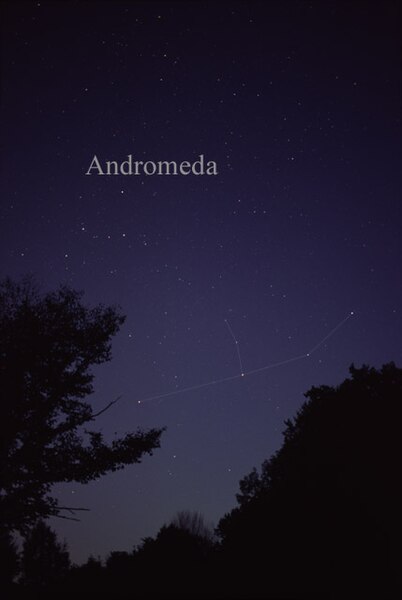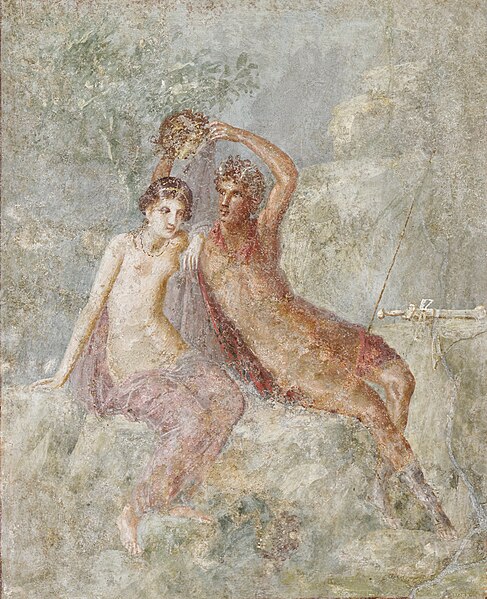Andromeda (constellation)
Andromeda is one of the 48 constellations listed by the 2nd-century Greco-Roman astronomer Ptolemy, and one of the 88 modern constellations. Located in the northern celestial hemisphere, it is named for Andromeda, daughter of Cassiopeia, in the Greek myth, who was chained to a rock to be eaten by the sea monster Cetus. Andromeda is most prominent during autumn evenings in the Northern Hemisphere, along with several other constellations named for characters in the Perseus myth. Because of its northern declination, Andromeda is visible only north of 40° south latitude; for observers farther south, it lies below the horizon. It is one of the largest constellations, with an area of 722 square degrees. This is over 1,400 times the size of the full moon, 55% of the size of the largest constellation, Hydra, and over 10 times the size of the smallest constellation, Crux.

Andromeda as depicted in Urania's Mirror, a set of constellation cards published in London c. 1825, showing the constellation from the inside of the celestial sphere
Photo of the constellation Andromeda, as it appears to the naked eye. Lines have been added for clarity.
M31, the Great Galaxy of Andromeda.
Sharp view of the Andromeda Galaxy
In Greek mythology, Andromeda is the daughter of Cepheus, the king of Aethiopia, and his wife, Cassiopeia. When Cassiopeia boasts that she is more beautiful than the Nereids, Poseidon sends the sea monster Cetus to ravage the coast of Aethiopia as divine punishment. Queen Cassiopeia understands that chaining Andromeda to a rock as a human sacrifice is what will appease Poseidon. Perseus finds her as he is coming back from his quest to decapitate Medusa, and brings her back to Greece to marry her and let her reign as his queen. With the head of Medusa, Perseus petrifies Cetus to stop it from terrorizing the coast any longer.
Perseus freeing Andromeda after killing Cetus, 1st century AD fresco from the Casa Dei Dioscuri, Pompeii
Perseus defends Andromeda from the monster Cetus by pelting it with stones. Corinthian amphora, 575–550 BC
Andromeda being tied for sacrifice. Apulian red-figure vase, c. 430–420 BC
Perseus holds up Medusa's head so Andromeda may safely see its reflection in the pool below. Fresco, 1st century AD, Pompeii








